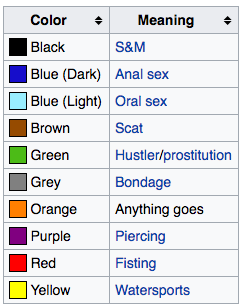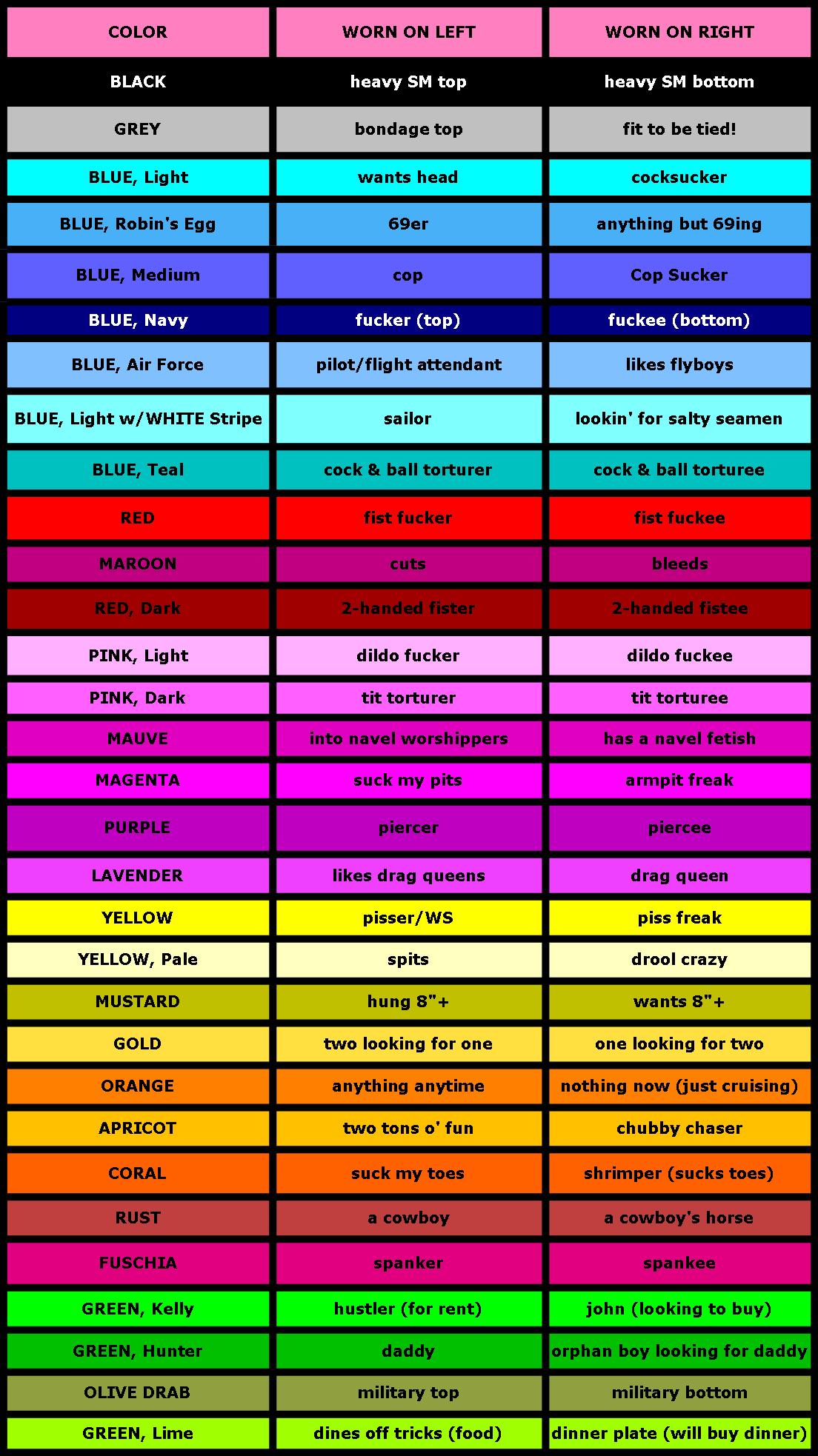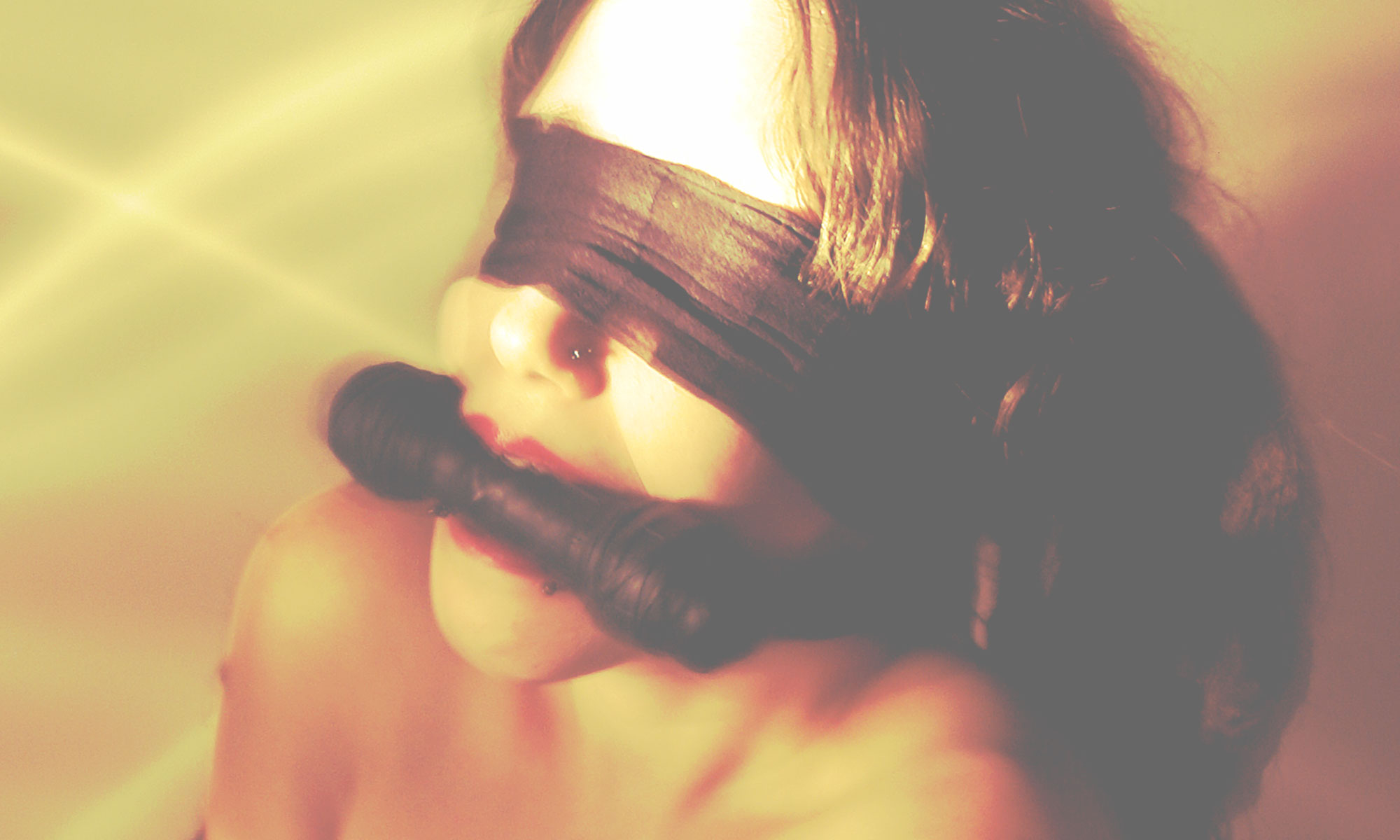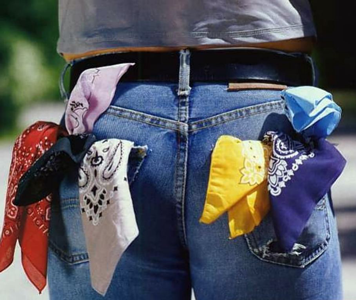You may have wandered around at a play party—let alone a non-kink event—wishing you knew who shared or complemented your desires. Gay and bisexual men in the 1970s developed a system to reduce this uncertainty: the hanky code.
The handkerchief code (also known as the hanky code, the bandana code, and flagging) is a color-coded system, employed usually among gay male casual-sex seekers or BDSM practitioners, to indicate preferred sexual fetishes, what kind of sex they are seeking, and whether they are a top/dominant [worn on the left] or bottom/submissive [worn on the right].
Read the full Wikipedia article here. It’s edited in part by San Francisco academic Susan Stryker.
Today, a common way of signaling your interests is placing and responding to online ads or joining a kink billboard such as FetLife. What you see is generally what you get. If you live in a major city, you also may be able to find themed mixers and parties. (San Francisco’s BDSM community calendar reveals a dizzying array of options. I hope the ground is as fertile where you are!) The hanky code is alive and well in the gay male leather scene, though; BDSM stores such as Mr. S Leather continue to sell bandanas in an wide range of colors.
Below is a guide from the 1983 The Leatherman’s Handbook II by Larry Townsend (the 1972 first edition did not include this list), followed by a contemporary guide with many additions. The color gradations are pretty subtle in the latter, though, and adjacent colors can mean radically different practices, which pretty much defeats the purpose. E.g. white (omitted from both lists) can mean either ‘masturbation’ (for cis male ejaculate) or ‘novice.’ See what I mean?
Negotiation with a prospective partner remains important because, as Townsend noted in the Handbook, people may wear hankies of any color ‘only because the idea of the hankie turns them on’ or they ‘may not even know what it means.’




